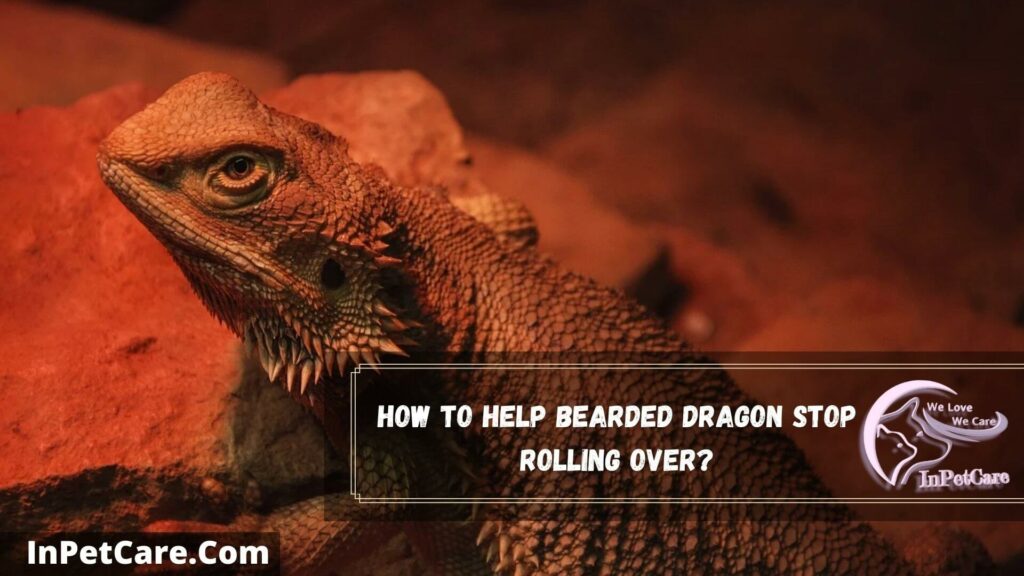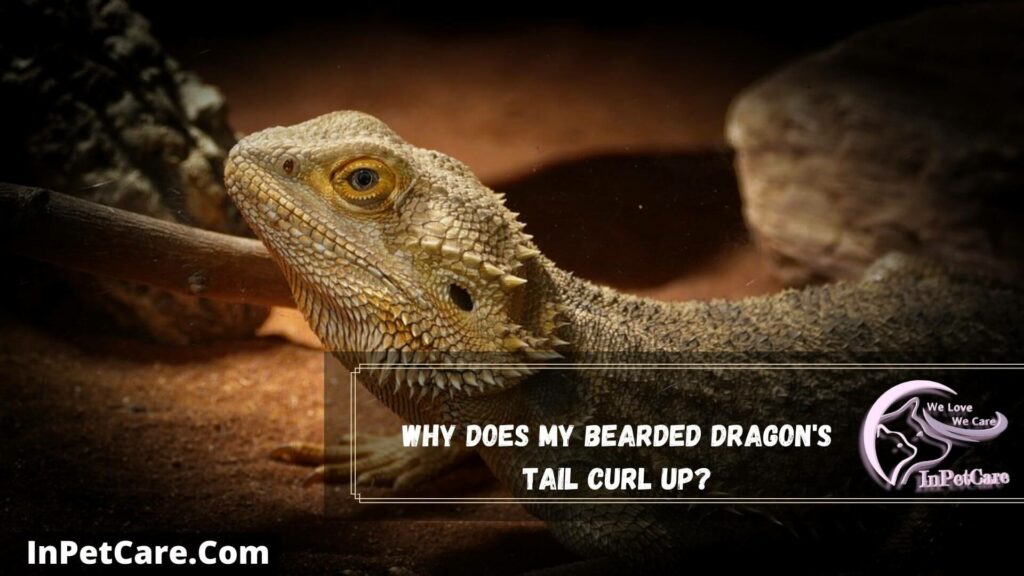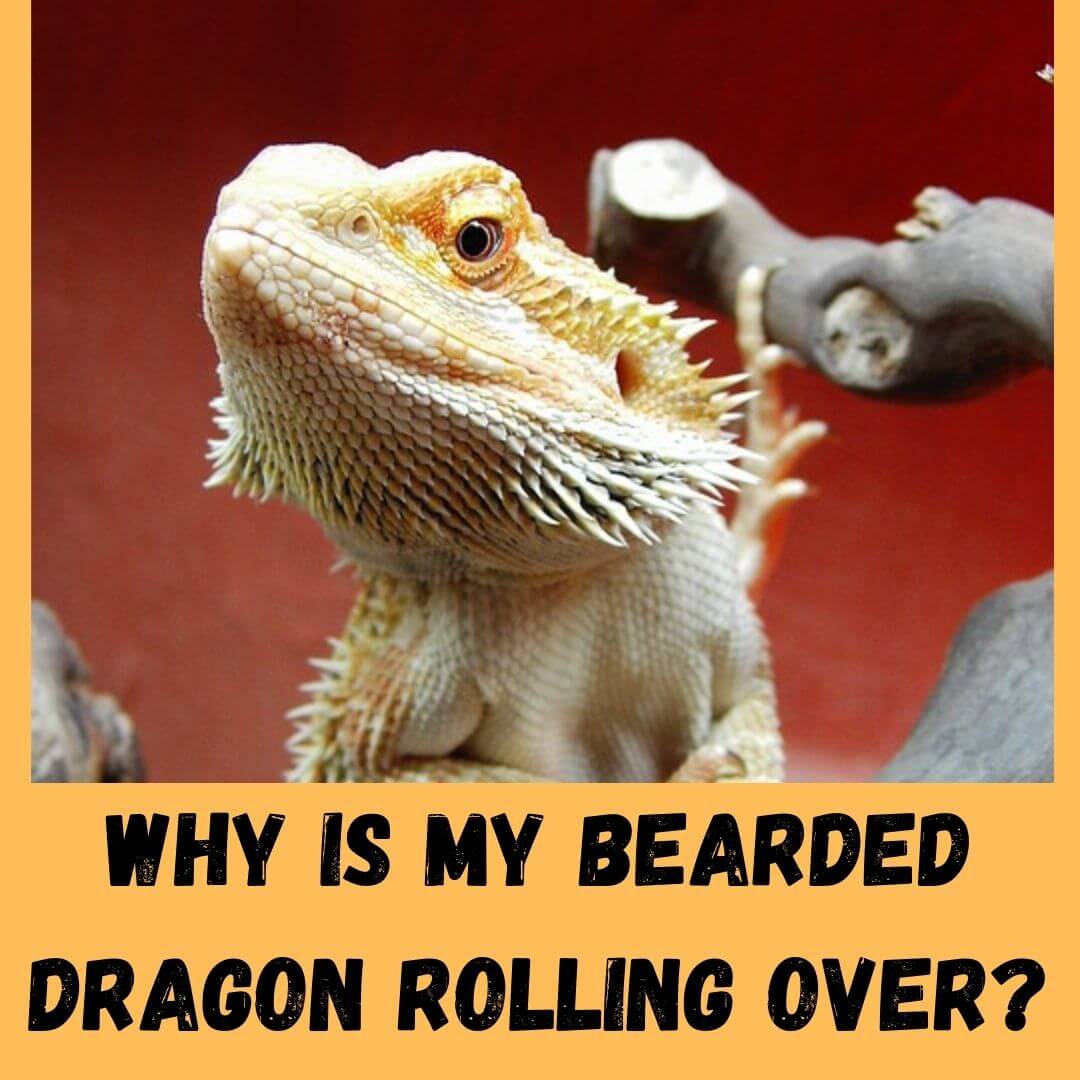Keeping the temperature and the humidity constant throughout the year and a proper diet rich in nutrients is the best practice for bearded Dragon care.
Sometimes, even a healthy bearded Dragon kept on proper care can show some worrying behavior and sign. One such behavior is bearded dragon flipping on the back.
So, why is my bearded dragon rolling over? In this article, I will help you know all the possible reasons why my bearded dragon keeps flipping over or rolling over constantly. Here is a quick answer to your question in case you want to save time or are in a hurry.
Why is my bearded dragon rolling over? A bearded Dragon usually rolls over due to bacterial infection, dehydration, head trauma, hypocalcemia, and viral infection like adenovirus. Some of these health issues can easily be treated, while others are life-threatening.
One such health issue is adenovirus which is rare and extremely dangerous. A beardie may rollover out of no apparent constantly if there has been impairment of the nervous tissue and the brain due to adenovirus.
From here, we will know in detail about the cause of why bearded Dragons roll over and the solution for such occurrence.
Post Contents
5 Reasons Why Is My Bearded Dragon Rolling Over
Adenovirus In Bearded Dragon (Viral Infection)
A dragon can start rolling over if they are suffering from a viral infection known as adenovirus. This kind of virus is fatal to their neurological system and needs instant medical attention. Rolling or flipping over is not a good sign if it continues several times. Adenovirus can have a disastrous effect.
Following are the Symptoms of adenovirus in bearded dragons.
- Flipping over repeatedly.
- Bearded Dragon flipping on the back constantly
- Bearded Dragon rolling over
- Looking upwards constantly
- Difficulty in breathing
- Diarrhoea and sudden weight loss
- Difficulty in moving and eating.
It is essential to keep your bearded dragon health occasionally examined at least once in a couple of months. Another piece of advice is to separate the beardie suffering with adenovirus from other reptiles even if it is treated. Adenovirus can spread quickly to other lizards and snakes who are perfect in their health condition.
Plus, you should also avoid breeding those bearded Dragons that have suffered adenovirus once in their lifetime. If your bearded dragon is affected by this viral infection, they are infected for life. If the above are the symptoms of your pet beardie, get them medical treatment as soon as possible.
Most of the time, bearded Dragons inherit and get infected with adenovirus from their mother before hatching. However, it doesn’t mean that other Dragons can’t catch it in their environment with direct contact. It is fatal and life-threatening for young beardies and Juvenil.
In most cases, adenovirus neutralizes its victim. I recommend you gain all the information and knowledge on this disease so that you can be one step ahead and prevent your pet from falling ill in the first place.
The most common and significant symptom of adenovirus is losing weight, flipping & rolling over continuously.
Dehydration In Bearded Dragon
When bearded dragon is dehydrated, they are also constipated. It is essential to provide them water through a different medium.
Bathing, misting, feeding water directly from a bowl, eyedropper, and another method is a great way to give water to your bearded dragon.
If your beardie is dehydrated, it can make their rollover.
Here are a few symptoms of dehydration in bearded dragons.
- Lack of appetite
- Loose skin
- Sunken Eyes
- Lethargy
- Wrinkled skin
- Rollover
- Flip over
If this is the case, providing them with enough water through misting will help you.
Head Trauma In Bearded Dragon
Any injury or falling from a height can give a head trauma to a bearded dragon.
Sometimes, a bearded dragon tends to smack or hit on the tank’s glass with its head and body. It can result in swelling around the areas he hit.
Specifically, swelling and injuries due to smacking itself over the tank glass will affect the head and jaw area.
Head trauma in bearded dragons will also result in rolling over or flipping over continuously.
It is very vital to keep an eye on your bearded dragon movement and check if everything goes right or not.
Here are a few symptoms of head trauma in bearded dragons.
- Not eating much
- Lethargy
- Swelling around head and jaw area.
- Rolling/flipping over continuously.
- Restless behavior
- Recent accident
- Injury
Head trauma can also occur in the case of adenovirus. Another cause of head trauma could be dropping your pet from your hand or neck while helping or handling them.
If you have mistakenly dropped your bearded dragon from a height, it could also give them a head trauma.
Hypocalcemia In Bearded Dragon
A bearded dragon can start rolling over or fall over When walking due to a lack of calcium in its bloodstream.
Knowing the proper supply of calcium, UV light, and the temperature needed for your reptiles is very important.
Calcium deficiency is the primary cause of hypocalcemia.
Here are the following symptoms of hypocalcemia in bearded dragons.
- Fragile bones
- Muscle twitching
- Swelling legs
- Bearded Dragon flipping on back
- Permanent deformities in their spine, limbs, jaw, and tail.
- Rollover When walking
- Rolling over
Most of the symptoms of hypocalcemia are very hard to detect or spot.
Occasional visits with your beardie for periodic testing to your nearest vet office will always give you confidence in your pet’s health and wellbeing.
How To Help Bearded Dragon Stop Rolling Over?

The first thing you should do is observe your dragon’s movement and behavior closely for a couple of hours. It’ll help to identify other health issue symptoms.
You can try misting or adjusting the UVB or basking light temperature. Bearded dragons enjoy relaxing in the sun but not when it is the scorching heat.
You can get your bearded dragon somewhere cool and shady to relax during the scorching heat of the day.
You can also get them out of their cage in the morning and allow them to walk around.
They’ll like the morning sun and can easily withstand its temperature.
Suppose the surroundings and the environment of your beardie are stable and constant without any significant change.
In that case, the viral or bacterial infection could be the reason why they keep rolling over.
Getting professional help or contacting the veterinarian would be the best advice for you and your docile pet.
If everything is correct, get them to your nearest VeT office for a quick health checkup.
Why Do Bearded Dragon Curls Up?
A bearded Dragon can curl up their body out of stress. You beardie can get stress caused by many different things including the temperature.
However, I find their environment to be the most common culprit of such an issue. It would help if you kept the temperature maintained according to their need.
A bearded dragon can also get stressed out if the humidity is off. The temperature change usually makes your dragon curl up.
Sometimes, you either have to replace UVB light or clean their cage. Hygiene is essential in the tank also.
So, Why is my bearded dragon curled up in the corner? Okay, I have done everything right & checked twice, but still, they are curling up.
If your bearded dragon is curling up in the corner, the temperature is unstable inside their enclosure.
Beardie moving & curling up in the corner of the tank exhibits the need to either drop or raise the temperature.
Sometimes, the bearded dragon can also get very hot. On the other side, if they’re curling up in the cooler end of the tank, you need to increase the temperature
Why Does My Bearded Dragon’s Tail Curl Up?

A bearded dragon curls their tail out of excitement, running around to alert and to chase prey. They can also curl up their seats in response to warmth around the environment. When you put a bearded dragon in a hot surrounding or bathe ’em in warm water, they will likely curl up their tails.
Why My Bearded Dragon Falls Over When Walking?
If a bearded dragon falls over When walking, it exhibits a deficiency of vitamin D and calcium.
Any abnormal movement or motion when walking is also a sign of metabolic bone disease.
In most cases, bearded dragon tends to fall over When walking due to calcium issues. Make sure they have enough UVB to absorb their calcium correctly.
Conclusion
Whether your bearded dragon is flipping on the back or your beardie is rolling over, if it’s repetitive behavior, adenovirus tends to be the primary reason behind such occurrence.
Adenovirus is a fatal disease that completely disturbs the brain and the neurological system of reptiles. It’s not a good sign and needs quick medical support.
I tried my best to give you all the necessary information to know why is my bearded dragon rolling over? If you have any questions, please consult with your veterinarian as they are professionals and have experienced such situations. Follow us on social media

94% of pet owners say their animal pal makes them smile more than once a day. In 2007, I realized that I was made for saving Animals. My father is a Vet, and I think every pet deserves one. I started this blog, “InPetCare”, in 2019 with my father to enlighten a wider audience.
